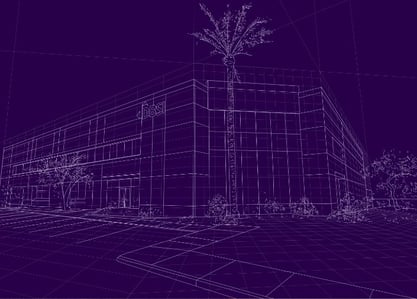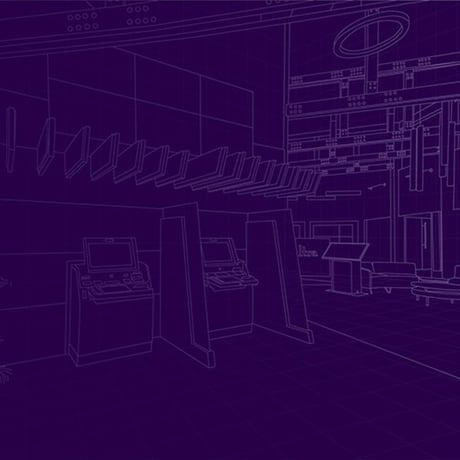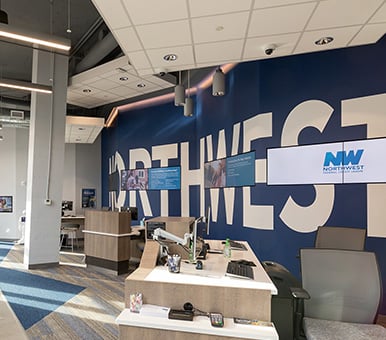3 min read
The Horrors of Branch Construction Agreements: How To Come Out On Top
Bruce Allen Eastwood : Sep 25, 2014

When building your branch project, you want it all. High quality work. Speed to market. Favorable pricing.
So you do what any other banker would do when it comes time to branch construction—hire an architect to draw up the plans and then bid it out to get yourself the lowest price tag for the project.
With a set price finalized and feeling like you’ve worked out a great contract, you send it off to the finance department and the building process begins.
But the inevitable happens.
You know—the extra costs that weren’t included, endless change orders, missed timelines and disappointment down the road.
By the time your project is finished, you’ve spent way more than the original price tag you were given. Even worse, the quality of the finished project doesn’t quite meet expectations.
Could you have done something different to get better results?
Short answer: Yes
The historic approach of an upfront “Fixed Price” agreement for construction and renovation projects sounds good in theory, but it’s this type of contract that leads to construction project horror stories.
Here’s why a Fixed-Price Branch Construction Agreement leads to disappointing results:
It doesn’t allow any flexibility. It’s almost impossible to fully specify every detail up front on a complicated branch project. Yet, if you want to change any part of the original plans during the process, a change order must be issued. In most cases that can be costly. Contractors often come in at a very low bid in the beginning, knowing they will get change orders to charge a very high price for the “extras”— making up for any initial cost savings.
It doesn’t promote quality. With fixed-price, a contractor is incentivized to get things done as cheaply as possible so they can make a profit. The goal is “good enough”—not necessarily finding or recommending a better, but slightly more expensive option to clients.
Additionally, if the work turns out to be even more expensive than anticipated, the contractor will be tempted to cut corners and perform sub-par work on the cheap. For a financial institution trying to portray a certain image, quality makes a difference.
It takes longer. With Fixed-Price contracts, you’re in a complete holding pattern until every single detail is hammered out. This can make your project take up to 30% longer and add extra costs. Getting those extremely detailed plans up front drives up architectural costs and the delayed bidding process usually means higher prices from subcontractors.
Costs are hidden. Is that flooring really worth what you paid for it? With fixed-price, you have no idea what you’re paying for. This closed-book approach doesn’t make anyone feel secure.
Greener Pastures: Transparent/Cost Plus Agreements
Ok, so by now you’re probably asking yourself, what’s the alternative? Is there a better way to make the process less difficult, enjoyable even?
A Transparent/Cost Plus Contract does exactly that. Very simply, it's the actual cost to build your project plus a small contractor fee.
Meaning...everything is openly shared with you. From invoices to detailed line items, you can see exactly what your contractor is paying to build your project and know you 're getting value for what you're paying for.
Comforting, right?
Now, instead of a relationship where your contractor is just trying to complete a job for less than what they were paid, it becomes an open partnership and journey together to achieve a successful result.
What makes Transparent Agreements a better choice?
With a Transparent Agreement, you can still get a very detailed estimate up-front on what your project will cost, plus all of these benefits, too:
Higher Quality. The focus is on what best meets your needs, not how to cut corners to make a buck. If there is a better option, or lower cost way of doing something, your contractor can tell you and pass the savings over to you.
Greater Flexibility. You might not know exactly what finishes and elements you want at a beginning of a project. With a Transparent Agreement, that doesn’t matter. Because of the fluid contract, change orders do no exist. Instead it’s a partnership where you can choose between different options and price points for items as the project develops.
Lower Costs. Inflated pricing is eliminated, and the more open subcontractor bidding cycle reduces prices by 7% on average. Plus, if the project comes in under budget, the difference is passed on to you.
Faster Turnaround. Your project can be fast-tracked while decisions are still underway, reducing the overall project duration by as much as 33%.
Have a Preferred or Local Subcontractor? Transparent means you can add them to the bidding mix and decide if their bid is the best choice.
Disciplined Pricing. Since you get to see every line item and what it costs, your contractor is motivated to get you the best price.
Complete Transparency. You don’t have to worry about being taken advantage of—you know and can see all the inner workings.
Ultimately, all these things add up to higher satisfaction and a branch project that delivers. On time and on budget.
So, next time you're considering a new branch build or renovation project, consider the path less taken of a Transparent Contract to find a much happier ending.



































-1.png)
-4.png)
